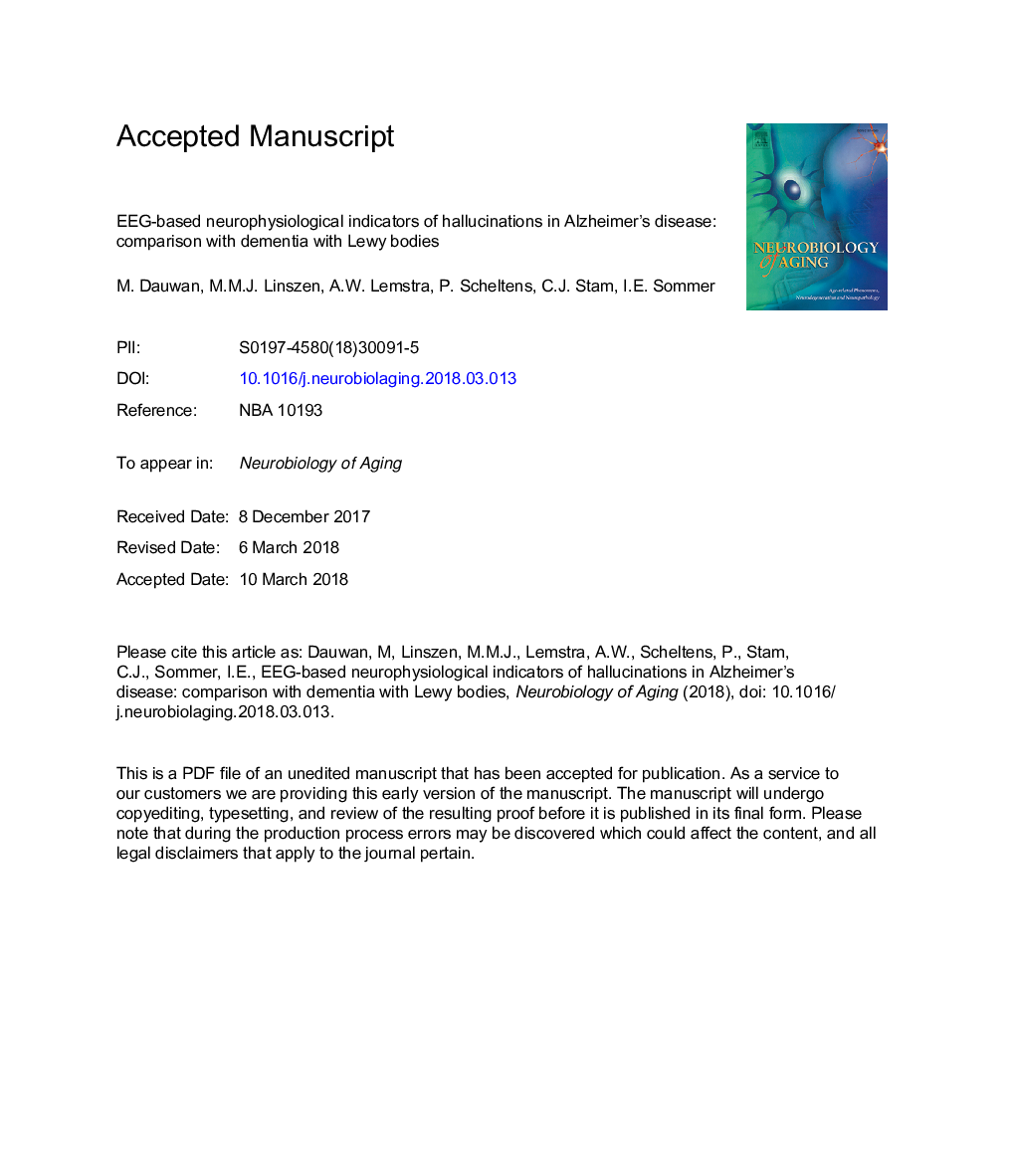| کد مقاله | کد نشریه | سال انتشار | مقاله انگلیسی | نسخه تمام متن |
|---|---|---|---|---|
| 6802910 | 1433517 | 2018 | 35 صفحه PDF | دانلود رایگان |
عنوان انگلیسی مقاله ISI
EEG-based neurophysiological indicators of hallucinations in Alzheimer's disease: Comparison with dementia with Lewy bodies
دانلود مقاله + سفارش ترجمه
دانلود مقاله ISI انگلیسی
رایگان برای ایرانیان
کلمات کلیدی
موضوعات مرتبط
علوم زیستی و بیوفناوری
بیوشیمی، ژنتیک و زیست شناسی مولکولی
سالمندی
پیش نمایش صفحه اول مقاله

چکیده انگلیسی
We studied neurophysiological indicators of hallucinations in Alzheimer's disease patients with hallucinations (ADhall+), and compared them with nonhallucinating AD (ADhallâ) and dementia with Lewy bodies (DLBhall+) patients. Thirty-six matched ADhall+ and 108 ADhallâ and 29 DLBhall+ patients were selected from the Amsterdam Dementia Cohort. Electroencephalography (EEG) spectral and functional connectivity (FC) analyses (phase lag index) were performed. Quantitative and visual EEG measures were combined in a random forest algorithm to determine which EEG-based variable(s) play a role in hallucinations. ADhall+ patients showed lower peak frequency (7.26 vs. 7.94 Hz, p < 0.01), α2-and β-power, and α2-FC but higher δ-power compared to ADhallâ. ADhall+ showed lower δ-power, higher β-power, and α1-FC than DLBhall+ but did not differ in peak frequency (7.26 vs. 6.95 Hz), θ- or α-power. ADhall+ patients could be differentiated from ADhallâ and DLBhall+ with a weighted accuracy of 71% with α1-power and 100% with β-FC, the 2 most differentiating features. In sum, EEG slowing and decrease in α1-and β-band activity form potential neurophysiological indicators of underlying cholinergic deficiency in ADhall+ and DLBhall+.
ناشر
Database: Elsevier - ScienceDirect (ساینس دایرکت)
Journal: Neurobiology of Aging - Volume 67, July 2018, Pages 75-83
Journal: Neurobiology of Aging - Volume 67, July 2018, Pages 75-83
نویسندگان
Meenakshi Dauwan, Mascha M.J. Linszen, Afina W. Lemstra, Philip Scheltens, Cornelis J. Stam, Iris E. Sommer,